Products
-
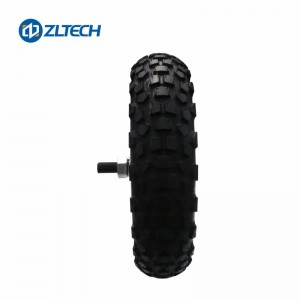
ZLTECH 15inch 200kg DC brushless hub motor with pneumatic tire
Zhongling Science and Technology’s high-power and high load hub has unique advantages. It is a high-performance, exquisite and scientific detail design, which is its advantage in the field of AGV robot hub. The protection level of Zhongling Technology robot hub motor has 2 level, one is IP54 and another is IP65, which can effectively prevent the invasion of dust and water and ensure the long-term effective operation of the hub. Zhongling Technology AGV wheel hub is light in weight, high in manufacturing accuracy, small in deformation and inertial resistance when rotating at high speed, which is conducive to improving the straight line driving performance of the robot, reducing the rolling resistance of tires, and thus reducing the loss. Tires with cushioning and shock absorption properties can greatly improve the comfort and stability of the robot on uneven roads or at high speeds.
-
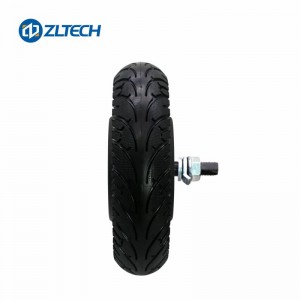
ZLTECH 8inch 36V 48V 250W 4N.m 100kg single shaft double hub motor for delivery robot
8-inch high-power motors are divided into three types, ZLLG80ASM250 V1.0 single axis, ZLLG80ASM250 V1.0 dual axis, ZLLG80ASM250 V3.0 single axis (4096 magnetic Refueling seals)
-
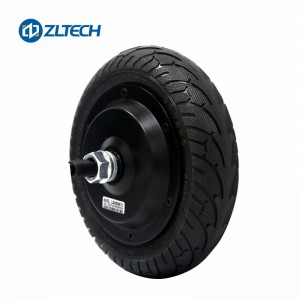
ZLTECH 8inch 48V 150kg wheel hub motor with rubber tire
Shenzhen Zhongling Technology is a research and development enterprise mainly engaged in the research and development and production of wheel hub servo motors and drivers. It supports the customization of a variety of hub motor products, has a strong research team, and has a perfect sales after-sales system. We have cooperated with more than 500 high-tech companies to make mutual progress and bring more perfect and excellent products and services to customers. We do not seek the lowest price, but we seek to let customers use the best products at the lowest price. If you need hub motor, driver, stepping motor and other series of products, you can click our official website www.zlrobotmotor.com to learn more.
-
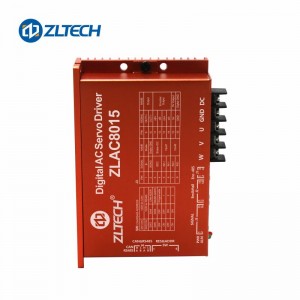
ZLAC8015 ZLTECH 24V-48V DC 30A CANOpen RS485 wheel servo driver motor controller for robot
ZLAC8015 is a high-performance digital servo driver for hub servo motor. It has a simple structure and high integration, and adds bus communication and single-axis controller function
-
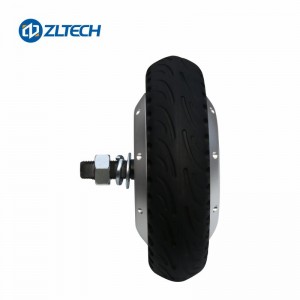
ZLTECH 10inch 48V 800W drive inwheel motor for mowing robot
Shenzhen Zhongling Technology Co.,Ltd is a manufacturer and exporter of various motors. Our products include: hub motor, hub motor driver, Servo motor, integrated motor, stepping motor and BLDC motor. Products are widely used in Robot, AGV, medical, smart home, automobiles, electronic appliances, and other fields. We have a professional technical team and experienced technical workers, who can solve technical problems for you. Our products have the advantages of stable performance, quietness, low torque, low energy consumption and long service life. The company adheres to the business philosophy of “quality first, technology refinement, and integrity management”, so it is selected and recognized by more and more customers. We look forward to your joining and let us build a better cooperative relationship together.
-

ZLTECH 3phase 60mm Nema24 24V 100W/200W/300W/400W 3000RPM BLDC motor for printing machine
A Brushless DC Electric Motor (BLDC) is an electric motor powered by a direct current voltage supply and commutated electronically instead of by brushes like in conventional DC motors. BLDC motors are more popular than the conventional DC motors nowadays, but the development of these type of motors has only been possible since the 1960s when semiconductor electronics were developed.
Similarities BLDC and DC motors
Both types of motors consist of a stator with permanent magnets or electromagnetic coils on the outside and a rotor with coil windings that can be powered by direct current on the inside. When the motor is powered by direct current, a magnetic field will be created within the stator, either attracting or repelling the magnets in the rotor. This causes the rotor to start spinning.
A commutator is needed to keep the rotor rotating, because the rotor would stop when it is in line with the magnetic forces in the stator. The commutator continuously switches the DC current through the windings, and thus switches the magnetic field too. This way, the rotor can keep rotating as long as the motor is powered.
Differences BLDC and DC motors
The most prominent difference between a BLDC motor and a conventional DC motor is the type of commutator. A DC motor uses carbon brushes for this purpose. A disadvantage of these brushes is that they wear quickly. That is why BLDC motors use sensors – usually Hall sensors – to measure the position of the rotor and a circuit board that functions as a switch. The input measurements of the sensors are processed by the circuit board which it accurately times the right moment to commutate as the rotor turns.
-
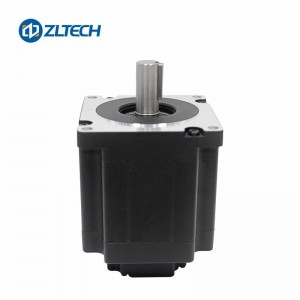
ZLTECH 3phase 110mm Nema42 48V DC 1000W 27A 3000RPM brushless motor for robotic arm
Brushless DC motors are common in industrial applications across the world. At the most basic level, there are brushed and brushless motors and there are DC and AC motors. Brushless DC motors don’t contain brushes and use a DC current.
These motors provide many specific advantages over other types of electrical motors, but, going beyond the basics, what exactly is a brushless DC motor? How does it work and what’s it used for?
How a Brushless DC Motor Works
It often helps to explain how a brushed DC motor works first, as they were used for some time before brushless DC motors were available. A brushed DC motor has permanent magnets on the outside of its structure, with a spinning armature on the inside. The permanent magnets, which are stationary on the outside, are called the stator. The armature, which rotates and contains an electromagnet, is called the rotor.
In a brushed DC motor, the rotor spins 180-degrees when an electric current is run to the armature. To go any further, the poles of the electromagnet must flip. The brushes, as the rotor spins, make contact with the stator, flipping the magnetic field and allowing the rotor to spin a full 360-degrees.
A brushless DC motor is essentially flipped inside out, eliminating the need for brushes to flip the electromagnetic field. In brushless DC motors, the permanent magnets are on the rotor, and the electromagnets are on the stator. A computer then charges the electromagnets in the stator to rotate the rotor a full 360-degrees.
What are Brushless DC Motors Used For?
Brushless DC motors typically have an efficiency of 85-90%, while brushed motors are usually only 75-80% efficient. Brushes eventually wear out, sometimes causing dangerous sparking, limiting the lifespan of a brushed motor. Brushless DC motors are quiet, lighter and have much longer lifespans. Because computers control the electrical current, brushless DC motors can achieve much more precise motion control.
Because of all these advantages, brushless DC motors are often used in modern devices where low noise and low heat are required, especially in devices that run continuously. This may include washing machines, air conditioners and other consumer electronics.
-
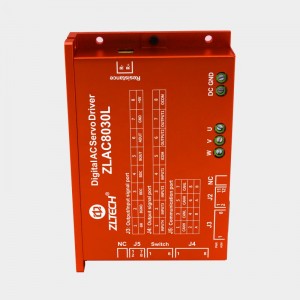
ZLTECH 24V-48V DC 30A CAN RS485 servo motor controller driver for CNC machine
Servo driver is an important part of modern motion control and is widely used in automation equipment, such as industrial robots and CNC machining centers. Servo driving technology, as one of the key technologies for the control of CNC machine tools, industrial robots and other industrial machinery, has received extensive attention in recent years.
The servo driver uses a digital signal processor (DSP) as the control core, which could realize more complex control algorithms, and realize digitization, networking and intelligence. At the same time, it has fault detection and protection circuits including overvoltage, overcurrent, overheating, undervoltage, and etc.
The servo driver control is divided into position loop, velocity loop and current loop according to its control object from outside to inside. Correspondingly the servo driver can also support position control mode, velocity control mode and torque control mode. The driver control mode can be given in four ways: 1. Analog quantity setting, 2. Internal setting of parameter setting, 3. Pulse + direction setting, 4. Communication setting.
The application of internal setting of parameter setting is relatively few, and it is limited and step-adjusted.
The advantage of using the analog quantity setting is fast response. It is used in many high-precision and high-response occasions. Its disadvantage is that there is zero drift, which brings difficulties to debugging. European and American servo systems mostly use this method.
Pulse control is compatible with common signal methods: CW/CCW (positive and negative pulse), pulse/direction, A/B phase signal. Its disadvantage is low response. Japanese and Chinese servo systems mostly use this method.
Communication setting is currently the most commonly used control method. Its advantages are rapid setting, fast response, and reasonable motion planning. The common mode of communication setting is bus communication, which makes the wiring simple, and the diversified communication protocol also gives customers more choices.
ZLAC8030 is a high-power and low-voltage digital servo driver independently developed by themselves. Its system has a simple structure and high integration. It adds bus communication and single-axis controller functions. It is mainly matched with 500W-1000W servo motors.
-
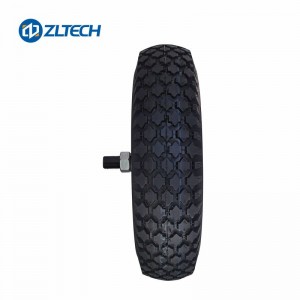
ZLTECH 16inch 24V-48V driving wheel motor for outdoor robot
Zhongling Science and Technology’s high-power and high load hub has unique advantages. It is a high-performance, exquisite and scientific detail design, which is its advantage in the field of AGV robot hub. The protection level of Zhongling Technology robot hub motor has 2 level, one is IP54 and another is IP67, which can effectively prevent the invasion of dust and water and ensure the long-term effective operation of the hub. Zhongling Technology AGV wheel hub is light in weight, high in manufacturing accuracy, small in deformation and inertial resistance when rotating at high speed, which is conducive to improving the straight line driving performance of the robot, reducing the rolling resistance of tires, and thus reducing the loss. Tires with cushioning and shock absorption properties can greatly improve the comfort and stability of the robot on uneven roads or at high speeds.
-
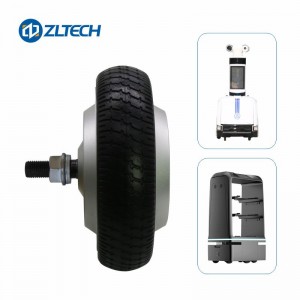
ZLTECH 6.5inch 24-48VDC 350W Wheel hub motor for robot
Shenzhen ZhongLing Technology Co., Ltd (ZLTECH) Robotics hub servo motor is a new type of hub motor. Its basic structure is: stator + encoder + shaft + magnet + steel rim+ cover + tire.
Robotics hub servo motor has obvious advantages: small size, simple structure, fast power response, low cost, easy installation, etc. It is very suitable for mobile robot with load less than 300kg, such as delivery robot, cleaning robot, disinfection robot, load handling robot, patrol robot, inspection robot, etc. Such in-wheel hub servo motor has a wide range of applications, covering all kinds of places in human life.
-
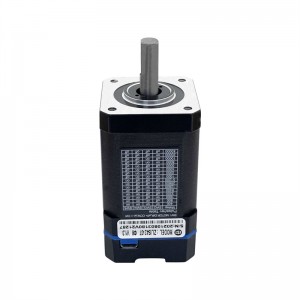
ZLTECH Nema17 0.5/0.7Nm 18V-36V integrated step-servo motor with encoder
Outline
ZLIS42 is a 2 phase hybrid step-servo motor with high-performance digital integrated drive. The system has a simple structure and high integration. This series of integrated closed-loop stepper motors use the latest 32-bit dedicated DSP chip for motor control, and use advanced digital filter control technology, resonance vibration suppression technology and precise current control technology to enable the two-phase hybrid stepper motor to achieve precise and stable operation . This series of integrated closed-loop stepper motors have the characteristics of large torque output, low noise, low vibration, and low heat, which are especially suitable for electronic processing equipment, laser processing, medical and small numerical control equipment.
-
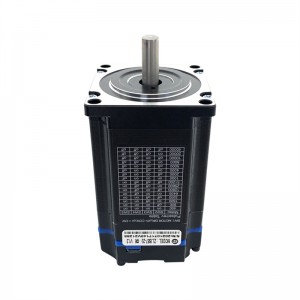
ZLTECH Nema23 0.9N.m 18V-28VDC encoder CANopen integrated step-servo motor
Outline
The ZLIS57C is a 2 phase digital step-servo motor with high-performance digital integrated driver. The system has a simple structure and high integration, and adds bus communication and single-axis controller functions. The bus communication adopts CAN bus interface, and supports CiA301 and CiA402 sub-protocols of the CANopen protocol.
